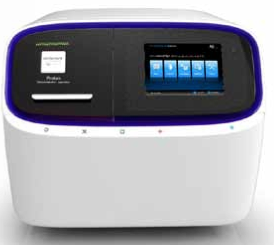
It's biological science's holy grail: the $1,000 genome. A readout of a person's complete genome for about the cost of a colonoscopy (and much less invasive) has been achieved by a new DNA-crunching machine from Ion Torrent, a division of Life Technologies. It is the successor to the company's PGM (Personal Genome Machine), which was introduced just over a year ago. According to Reuters:
Ion Torrent will sell the tabletop machine, called the Ion Proton Sequencer, for $99,000 to $149,000, making it affordable for large medical practices or clinics.
The Ion Proton will be launched mid-2012. The machine is three times the price of the original $50,000 PGM. But the DNA-reading chip inside it is 1,000 times more powerful,
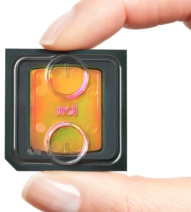
according to Jonathan Rothberg, CEO of Ion Torrent, allowing it to sequence an entire human genome in a day for $1,000--bringing the cost down to the level of a barrage of medical tests.
"The technology got better faster than we ever imagined," Rothberg told Technology Review. "We made a lot of progress on the chemistry and software, then developed a new series of chips from a new foundry." The improvement is faster than Moore's law, which predicts that microchips will double in power roughly every two years.
Still very new, semi-based sequencing DNA is unique. Optics-based sequencers, primarily from Illumina, a San Diego-based rival, currently dominate the genomics research field. They are generally considered more accurate, but these machines cost around $500,000, putting them out of reach for most clinicians.
Wide-spread adoption
"A genome sequence for $1,000 was a pipe dream just a few years ago," Richard Gibbs, director of the Human Genome Sequencing Center at Baylor, said in a statement in the Ion Proton press release. "A $1,000 genome in less than one day was not even on the radar, but will transform the clinical applications of sequencing."
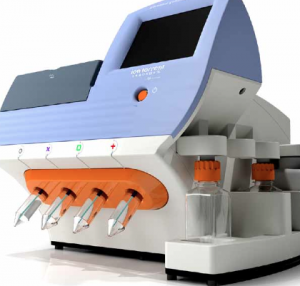
While the Ion PGM will remain as the company's low-cost solution aimed at sequencing genes, and small genomes, Baylor College of Medicine in Houston, Yale School of Medicine in New Haven, Connecticut, and the Broad Institute in Cambridge, Massachusetts, have already signed up for the new sequencers, according to the company. This is the beginning of technology trend that will play out over the next decade between optical and chip rivals. And if Moore's law - or this accelerated version - plays out, then the ultimate metaphor might be the disruptive effects the PC had on the mainframe and mini-mainframe business. Long live Wang Computers.
Today, widespread adoption is hard because small-scale users lack the ability to interpret the results, which requires a deep understanding of specific genetic mutations. But Rothberg has been working on a solution.
The Yale Daily News reports that as complex mutations continue to be discovered at Yale - a Rothberg alma mater - and other institutions, the company will work with Carnegie Mellon University, Rothberg's other alma mater, to compile complex genomic data into a simple piece of software that local hospitals can use to easily predict individuals' risk of genetic diseases.
If you have any doubt about the direction of medicine, an article in the Atlantic pointed out a short but revealing statement in the company press release:
Life Technologies will seek FDA clearance for the Ion PGM platform in 2012 (but not yet for the Proton), so it can be used in a clinical setting for diagnostic use rather than just for research purposes.
A quick look at the Ion Proton
The Ion Proton Sequencer, like the Ion Torrent, has an intuitive graphical interface designed so that users can rapidly navigate it
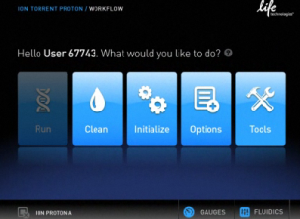
. The touch screen quickly starts a run or performs maintenance.
There are even embedded videos which provide info for the novice. Obviously, this machine is ahead of the curve, but the concept was designed with a widely adopted future use in mind, once DNA-based personalized medicine takes off. Progress bars, alerts, and wizards enhance an interface that goes from sample loading to results with little hands-on fiddling.
The machine also offers the same simple, easy-to-operate chip loading as the earlier and less expensive Ion PGM, which was introduced about a year ago. Just open the chip holder, place the chip inside, secure and close the cover.
The machine's design includes self-contained reagents, all conveniently located right behind
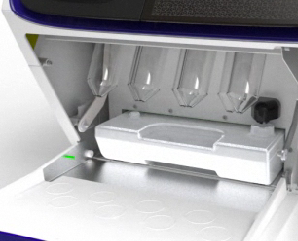
the easily opened front door. Reagents can be loaded from pre-prepared kits, saving manual steps. Then the state-of-the-art electronics quickly process the data generated by the high-density chips.
The company seems to have adopted the vaunted office printer business model whereby upfront cost are kept low while the bulk of the future revenues pour in from purchases of the reagents and CMOS chips. So, is you're comfortable replacing the toner in the office printer and then ordering copies with the touch-screen keypad, the future of medicine is almost here.
While the speed of the advanced next generation of Ion chips is nearly 1,000 times as powerful as the original chip, the company promises rapid speed increases over the next ten years. Right now, larger labs are ordering the new machine.
Here is research published in Nature explaining the latest chip technology.
The Man behind the machine
The company website explains: Dr. Jonathan Rothberg, who has a a chemical engineering background, is the visionary behind the Ion sequencing machines. The
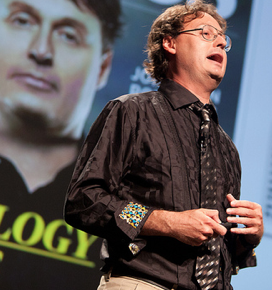
idea for massively parallel DNA sequencing (next-gen sequencing) came to him after his infant son was rushed to intensive care and he realized how critical individual genome sequencing was to human health. He subsequently founded 454 Life Sciences.
In 2007, He quickly realized that what scientists really needed was a direct way to get information from any biological system and translate it directly into digital information. So Dr. Rothberg founded Ion Torrent to link the language of chemistry and the binary language of computers, developing the ION torrent chip, a novel semiconductor device that creates the portal between the two worlds.
Dr. Rothberg later sequenced Gordon Moore's DNA as the first post-light Genome on a semiconductor chip (also published in Nature). In October 2010, Ion Torrent was acquired by Life Technologies for $725 million.


